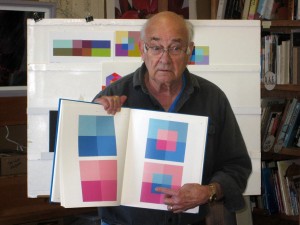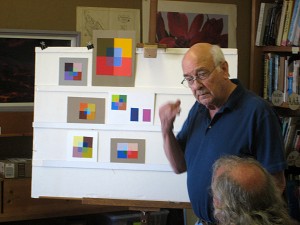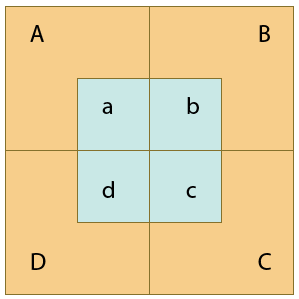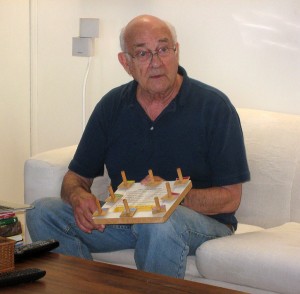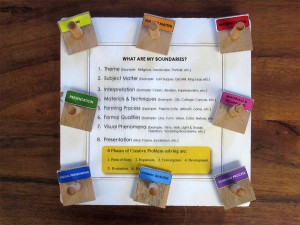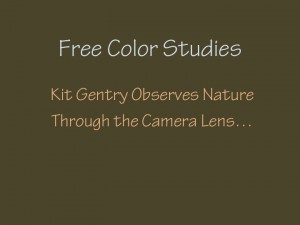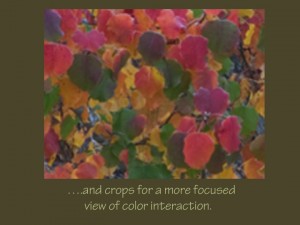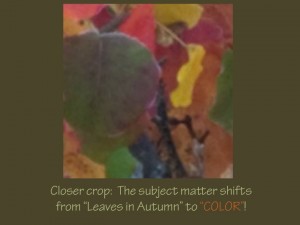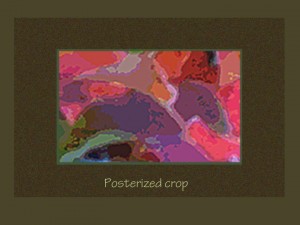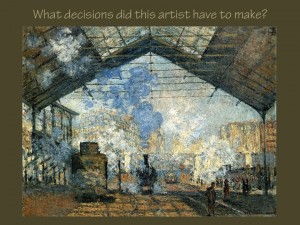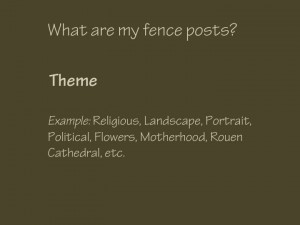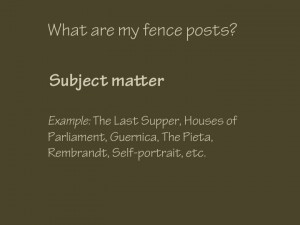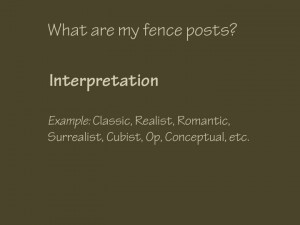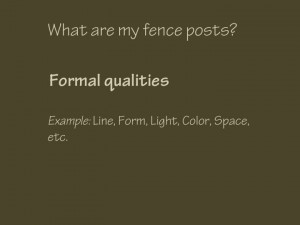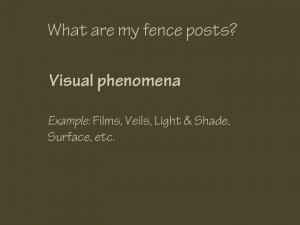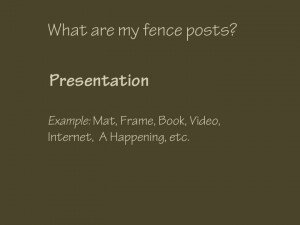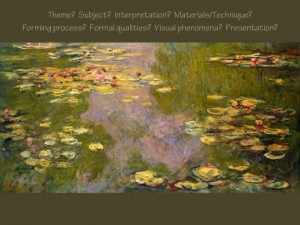Homework
You will set your own assignment for a final project. You could set your criteria from the eight “fence posts”.
Here are two examples of free color study assignments.
Luminosity, Lose a shape
Class recap
Critique – Assignment 9, Transposing colors of equal value
- Dick points out examples in the Albers book that miss the mark
- Tuesday homework: transposing colors of equal value; vanishing boundaries
- Saturday homework: transposing colors of equal value; vanishing boundaries
Several students said this was the hardest exercise yet. Distinguishing between hues is much easier than distinguishing value differences between different hues. It sounds simple: “Which is lighter? Which is darker?” But this skill is one that most causes students to doubt the teacher, as both Dick and Albers have experienced. Albers has said, “The usual results (60% wrong) are disillusioning as well as revealing. Voting for the wrong color often needs cover or compensation; also, the disappointment of wrong answers encourages doubts. The doubts are often directed, not against one’s own judgment, but against the competence of the teacher: are his answers the right one?”
Matching values between warm and cool colors is a real challenge since there is little similarity in hue. The specific format assigned for this exercise is designed to develop one’s skill at value discrimination, and facilitate comparison in several directions. With square abcd inset in square ABCD, each square has 3 neighbors to be compared against. If ABCD are warm colors, find cool colors abcd with values equal to the larger square in which each is inset. Compare A and a, B and b, C and c, D and d. Compare the value differences between squares: Is the contrast between a and b the same as between A and B? Is the Aa-Bb border consistently “hard” or “soft”? Compare squares Aa-Dd. Work your way around the figure, comparing pairs – inside-outside, left-right, up-down – adjusting the color in one square or another as you discover inconsistencies.
Why does this matter? Why would you want to go to the effort of finding hues of equal value? Because the single most effective way to create luminosity in a work is to have the viewer’s eye blend the colors – optical mixing. This is the secret of the Impressionists. Juxtaposing colors of equal value and similar hue creates incredible luminosity, in a technique called vanishing boundaries.
This week’s new concept: Creative problem-solving framework and artistic “fence posts”
- Introducing an artist’s “fence posts”
- An artist’s “fence posts”
An artist has a world of options available when starting a new work. Recognizing and articulating the range of options can lead to new ideas and more creative solutions. Using a creative problem-solving process can enhance lateral thinking. Dick’s graduate thesis was on creative problem solving. He originally identified five phases:
- Point of Entry: Identify preconceived notions.
- Expansion: Broaden our knowledge base through search and research. Identify our options.
- Converge: From the list of possibilities identified in Phase 2, make a selection.
- Develop: Create the work based upon the choices made.
- Evaluate: Critique the results, using the criteria established in Phase 3.
He later added a sixth phase, Exploitation, taking what was learned through the first five and pushing it even further. This process can be applied to any creative endeavor.
Dick has identified 8 categories of options specific to artists, which are the focus of phases 2 and 3. These 8 “fence posts” are:
- Theme
- Subject Matter
- Interpretation
- Materials & Techniques
- Forming Process
- Formal Qualities
- Visual Phenomena
- Presentation
The PDF below summarizes the creative process and fence posts together in a visual way. The presentation slides and additional PDFs in the “Class materials” section provide more detail.
[gview file=”https://dicknelsoncolor.com/wp-content/uploads/2013/11/CreativeProcessFencePosts.pdf”]
We used the worksheet below to capture how a specific work exemplifies the artist’s decisions in each category. Students can use the rightmost column to record their options and decisions for their final project for the course.
[gview file=”https://dicknelsoncolor.com/wp-content/uploads/2013/11/ArtisticDecisions.pdf” width=”100%” height=”550px”]
Dick recommended the book Conceptual Blockbusting by James Adams for more detail on creative problem solving and lateral thinking. Bella also suggested the works of Edward de Bono.
Class materials
[gview file=”https://dicknelsoncolor.com/wp-content/uploads/2013/11/6-PhasesShort.pdf”]
[gview file=”https://dicknelsoncolor.com/wp-content/uploads/2013/11/6PhaseProbSolv1.pdf”]
[gview file=”https://dicknelsoncolor.com/wp-content/uploads/2013/11/6PhaseProbSolv2-2.pdf”]
[gview file=”https://dicknelsoncolor.com/wp-content/uploads/2013/11/Fence-Me-Converted.pdf”]
[gview file=”https://dicknelsoncolor.com/wp-content/uploads/2012/04/Learning-Problem-Solving.pdf”]
